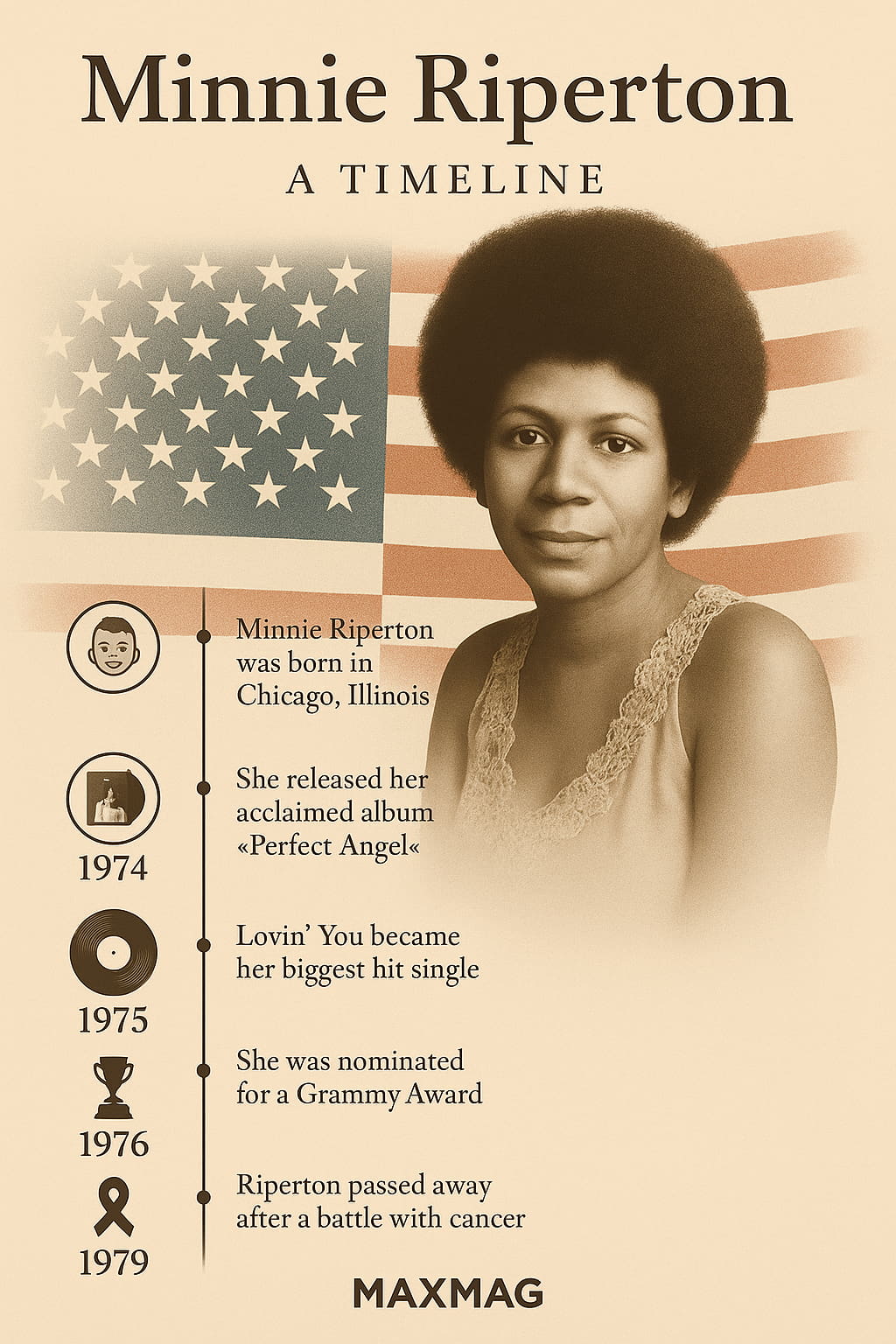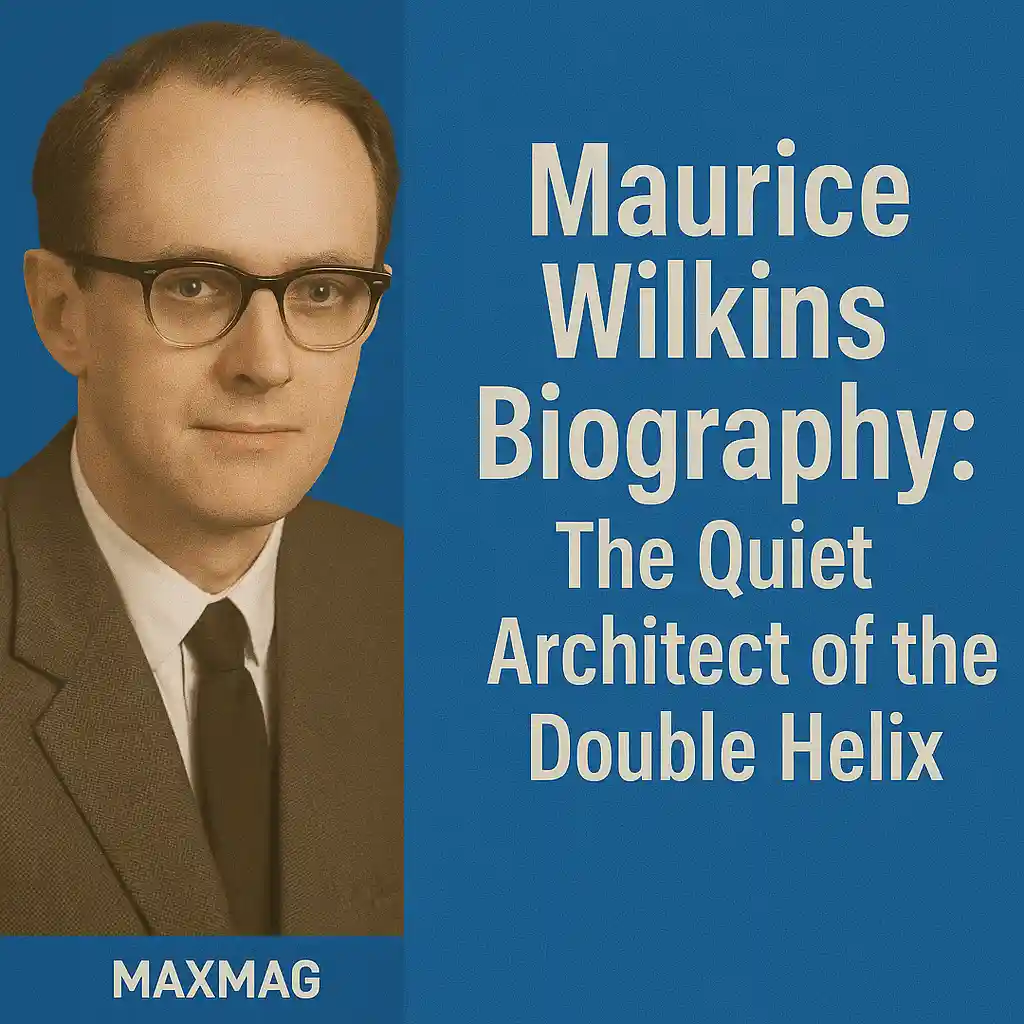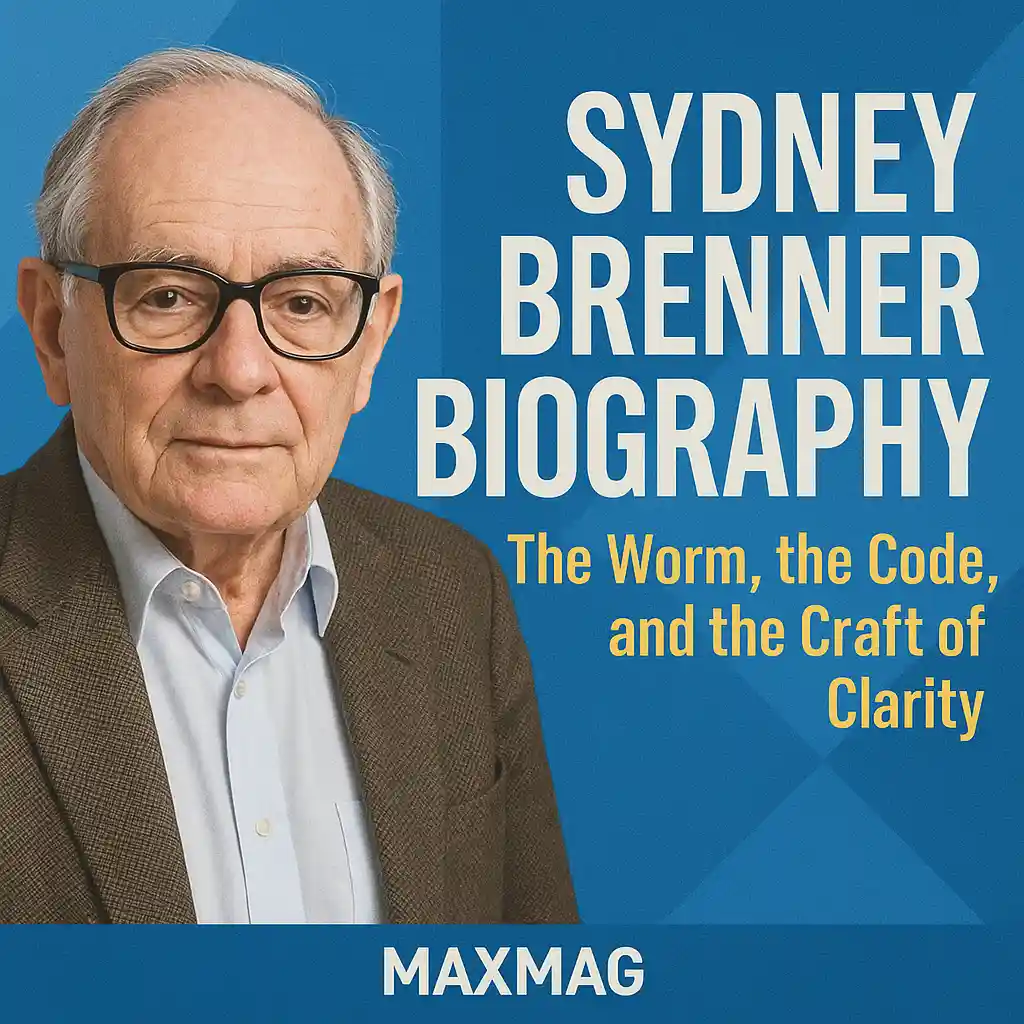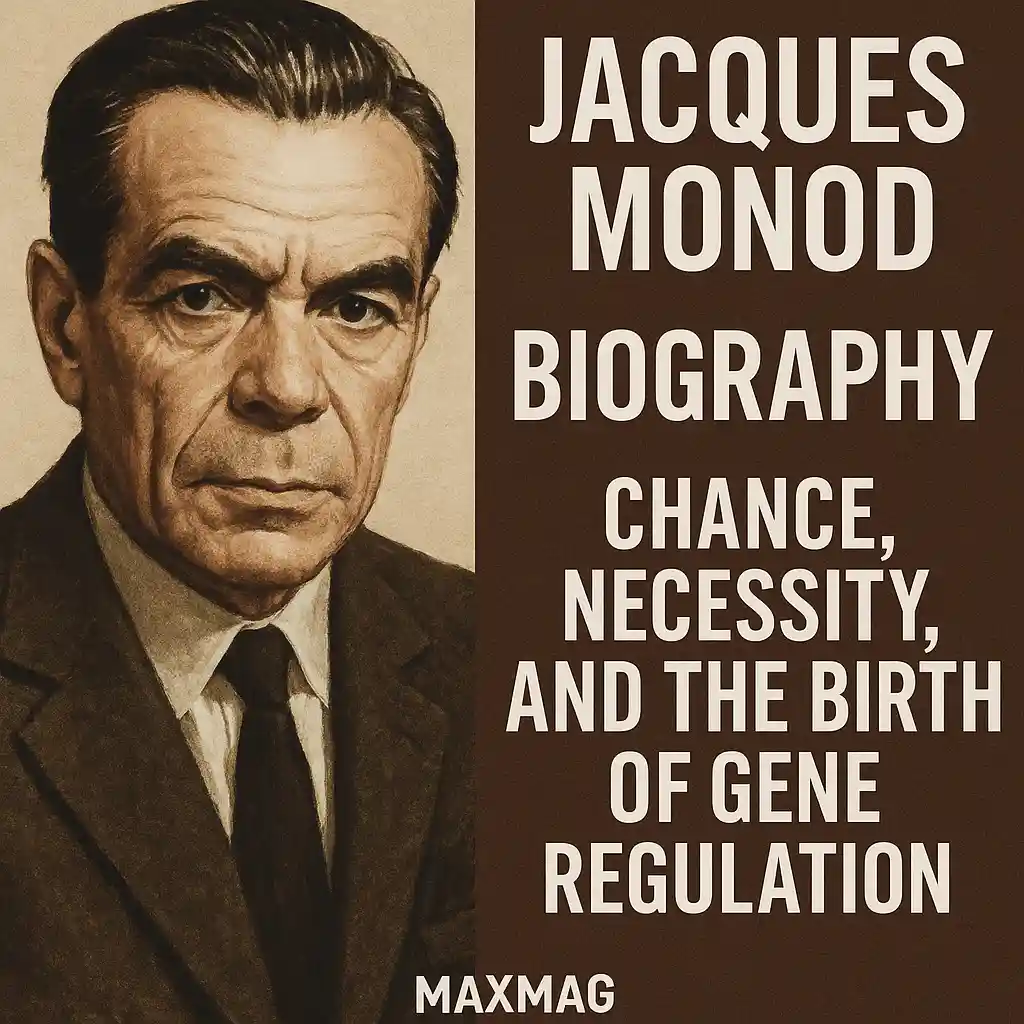
The story of Minnie Riperton is one of beauty, resilience, and unmatched vocal talent. The Minnie Riperton biography is not just a chronicle of a gifted singer, but a portrait of a woman who challenged the boundaries of soul music, overcame extraordinary odds, and left behind a legacy that continues to inspire generations. Known for her soaring five-octave range and the unforgettable hit “Lovin’ You,” Riperton defied the limits of her time both artistically and personally. Her life, while tragically short, was filled with richness, depth, and fearless passion.
This article dives deep into the Minnie Riperton biography—her childhood, rise to stardom, musical milestones, personal challenges, and the indelible mark she left on American culture.
Early Life: A Foundation in Discipline and Art
Born in Chicago on November 8, 1947, Minnie Julia Riperton was the youngest of eight children in a working-class African-American family. Her parents, Thelma and Daniel Riperton, recognized her talents early and ensured she was immersed in creative education. From a young age, she studied ballet and modern dance at Chicago’s Lincoln Center, disciplines that sharpened her poise and stage presence.
But it was her voice that made people pause. By her teen years, Riperton was studying classical music and opera under vocal coach Marion Jeffery. Unlike most children who dreamed of pop stardom, Riperton trained her voice with the seriousness of a future concert soprano. This training not only gave her the agility to reach whistle tones—a rare feat—but the emotional depth that would characterize her most iconic songs.
In her teenage years, she was drawn away from classical music toward rhythm and blues, influenced by artists like Sarah Vaughan and Nancy Wilson. This shift would lay the foundation for a unique style that merged classical control with soul-driven power. Riperton’s artistic growth reflects what the Library of Congress describes as a common journey among African-American musicians who blended genres to create new forms of expression.
Entry into Music: The Studio Years
Minnie Riperton’s professional career began while she was still a teenager. At just 15, she joined the girl group The Gems, where her voice quickly stood out for its range and clarity. While they achieved modest success, it was their studio work that brought Minnie into industry circles. The Gems frequently performed backing vocals for established artists like Etta James and Fontella Bass. These experiences exposed Minnie to professional studios and the mechanics of the music business—lessons she would carry forward.
Her big break came when she joined the psychedelic soul band Rotary Connection in 1966. The group, signed under Chess Records’ Cadet Concept division, was experimental and ahead of its time. They fused soul, rock, and orchestral arrangements, creating an otherworldly sound that perfectly suited Riperton’s wide-ranging vocal style. Her time with Rotary Connection was both artistically rewarding and foundational—it gave her national exposure and allowed her to stretch her creativity. The fusion approach they embraced mirrors innovations covered by institutions like the Smithsonian National Museum of African American History & Culture.
Solo Breakthrough: Finding Her Voice
After several albums with Rotary Connection, Riperton took a hiatus to focus on family life. She married music producer and songwriter Richard Rudolph in 1970, and the couple would later have two children, including future comedian and actress Maya Rudolph.
Yet Riperton’s voice was too powerful to stay silent for long. In 1974, she released her second solo album Perfect Angel—a career-defining work. Stevie Wonder, using the pseudonym El Toro Negro, co-produced the album and co-wrote several tracks. The standout song, “Lovin’ You,” was unlike anything else on the radio. Stripped-down and gentle, it was essentially a lullaby for her daughter Maya. Yet its beauty lay in its simplicity and purity.
“Lovin’ You” topped the Billboard Hot 100 and reached number one in over 20 countries. The song’s delicate whistle notes became Riperton’s vocal signature, and her use of them was both emotional and technical. Suddenly, this trained opera singer was a global pop star. Her contribution to American music is noted in the National Recording Registry, which preserves culturally significant sound recordings.
Expanding Her Artistry
The success of “Lovin’ You” placed Riperton in the spotlight, but she didn’t rest on commercial laurels. Her 1975 album Adventures in Paradise revealed a more confident, mature artist. The track “Inside My Love” tackled intimacy and sensuality in ways that were uncommon for female performers of the time. Some radio stations refused to play it, yet the song resonated with fans for its raw vulnerability and sophistication.
In the next few years, Riperton released Stay in Love (1977) and Minnie (1979), both albums demonstrating her willingness to experiment with disco, funk, and jazz influences. These records may not have replicated the chart success of “Lovin’ You,” but they solidified her place as a serious and evolving artist.
Throughout this phase, Riperton collaborated with some of the biggest names in music, including Leon Ware, Joe Sample, and George Benson. Her versatility allowed her to slip between genres while maintaining her emotional core. Each note she sang was filled with meaning—an unmistakable hallmark of a true artist.

Minnie Riperton Biography: A Legacy of Strength
In 1976, at the height of her career, Minnie Riperton was diagnosed with breast cancer. She underwent a radical mastectomy, but the disease had already spread. Rather than withdrawing from public life, Riperton chose transparency. She went public with her diagnosis and became the first African-American woman to serve as a national spokesperson for the American Cancer Society.
In her final years, she continued to record and perform, even making memorable appearances on television, such as a 1979 episode of The Mike Douglas Show with then-President Jimmy Carter. Her candor and strength inspired countless women facing similar diagnoses.
Riperton passed away on July 12, 1979, at the age of 31. Her death was a tragic loss to the music world. But as this Minnie Riperton biography shows, her life was not defined by illness—it was defined by joy, courage, and revolutionary artistry. Her advocacy work aligns with efforts highlighted by the National Cancer Institute, which continues to educate the public on early detection and awareness.
Artistic and Cultural Influence
The Minnie Riperton biography cannot be complete without examining her cultural legacy. Her influence stretches far beyond “Lovin’ You.” Artists such as Mariah Carey, Christina Aguilera, and Ariana Grande have cited her as an inspiration for their vocal styles. Riperton’s use of the whistle register, in particular, helped popularize a new vocal technique in modern R&B and pop.
Her music has also found a second life through sampling. Tracks from her albums have been used by artists in hip-hop and electronic genres. A Tribe Called Quest, Dr. Dre, and The Avalanches have all incorporated elements of her work, proving her timeless relevance.
Moreover, her daughter Maya Rudolph continues to honor her legacy by speaking openly about their relationship and the impact of her mother’s creativity and bravery. Her story also contributes to broader cultural conversations, such as those explored in NEH’s Humanities magazine, which often features artists who bridged personal identity and public expression.
FAQ – Minnie Riperton Biography
Q: How did Minnie Riperton get her start in music?
A: She began as a teen vocalist with The Gems and later gained national attention as a member of Rotary Connection, a psychedelic soul band from Chicago.
Q: What is Minnie Riperton best known for?
A: She is best known for her 1975 global hit “Lovin’ You,” which features her incredible whistle register and heartfelt simplicity.
Q: How many octaves could Minnie Riperton sing?
A: She had an astonishing five-octave vocal range, with the ability to access whistle tones—a rarity among singers.
Q: What impact did her cancer diagnosis have?
A: She became a vocal advocate for breast cancer awareness, breaking barriers by speaking openly about her illness and serving as a spokesperson for the American Cancer Society.
Q: How is Minnie Riperton remembered today?
A: Through continued airplay, sampling of her songs, her daughter Maya Rudolph’s public tributes, and her status as a pioneering artist in vocal technique and female empowerment in music.




